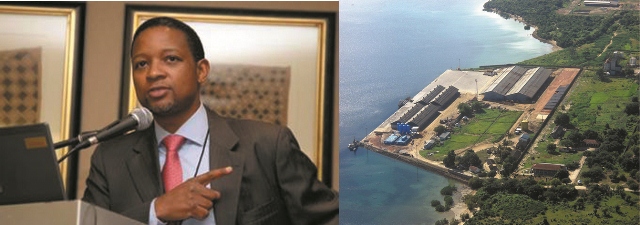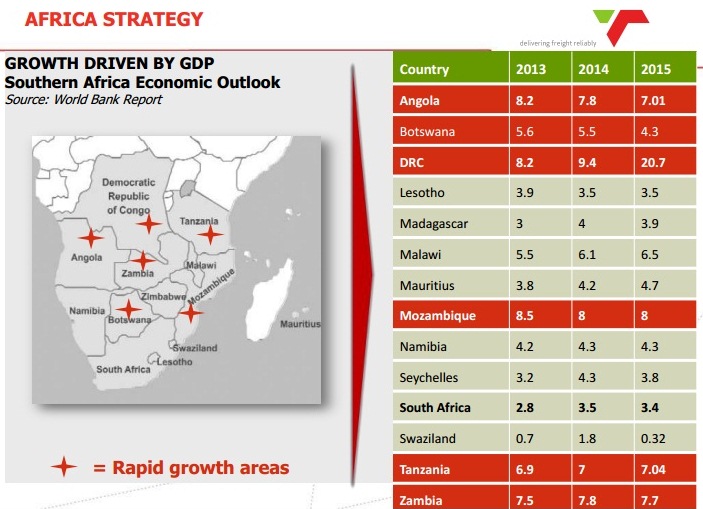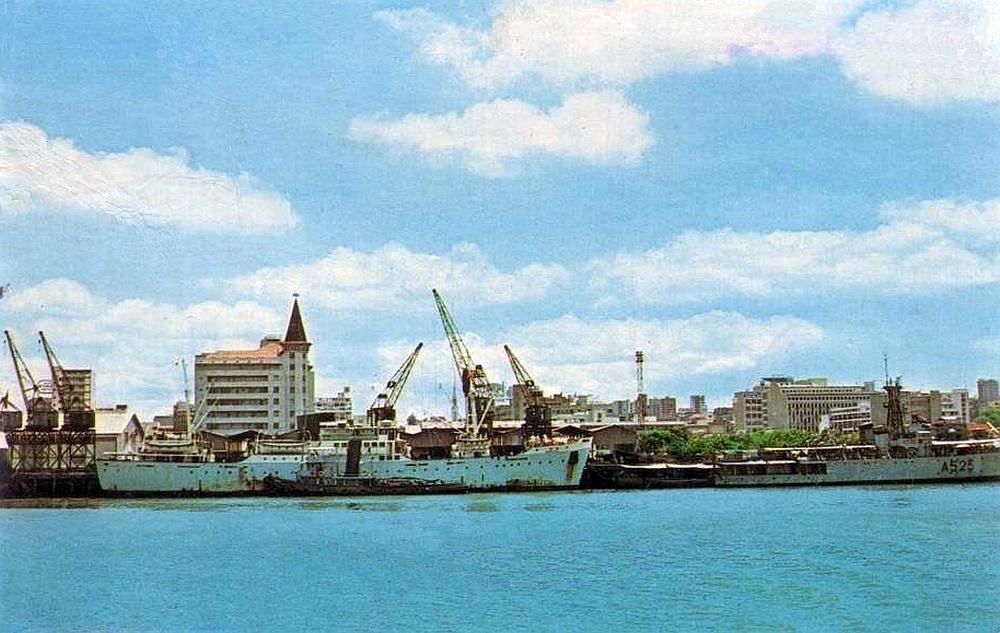
South Africa’s Transnet Port Terminals CEO Karl Socikwa (L) with Tanzania’s Mtwara Port (R) which needs to be worked on
By Jaston Binala.
A planned two-day EAC-SADC ports expansion conference scheduled for Dar es Salaam, Tanzania, from September 23, 2014 will enhance African integration.
Organizers of the Dar es Salaam conference have published a statement on the web signed by Karl Socikwa, Chief Executive Officer of South Africa’s Transnet Port Terminals, to say the conference has been planned for “increasing efficiency and integration activities in Africa.”
The conference is scheduled to bring together maritime stakeholders from the Eastern and Southern Africa regions to discuss port expansions in the two regions, in the wake of a predicted economic boom foreseen to increase volumes of cargo passing through the region’s ports.
Deepening Africa’s integration goes beyond harmonizing economic policies, according to an assessment made by the United Nations Economic Commission for Africa. The integration process also focuses on a few priority areas of regional and continental concern, where Regional Economic Communities (RECs) could strengthen their cooperation and benefit from best integration practices.
Interregional coordination is growing, the UN Commission says. COMESA, EAC and SADC held their first Tripartite Summit in October 2008, where the Heads of State and Government of the three RECs agreed to establish a Free Trade Area (FTA).
This Tripartite FTA brings together 26 African countries, with a combined population of 530 million people, and a total GDP of USD 630 billion, or more than half of the output of Africa’s economies. It has galvanized the interest of Africa’s policymakers towards a much broader Continental FTA.
Accordingly, the African Union Ministers of Trade, at their 6th Ordinary Session in Kigali in November 2010, recommended fast-tracking the establishment of an African Continental Free Trade Area (C-FTA).
Improvement of marketing infrastructure—the airports, roads, railway systems and sea ports enhances both the import-export trade in an economic block as well as easing economic integration as products move with ease within the region, according to analysts.
The UN Commission says in a published report African countries that are members of the East African Community (EAC) and those that are members of the Southern African Development Community (SADC) have agreed on a Minimum Integration Programme (MIP). The MIP comprises those activities, projects and programmes that the RECs have selected to accelerate and bring to completion as part of the regional and continental integration process.
One of the main challenges facing Africa’s Regional Economic Communities (RECs) in implementing their integration programmes is overlapping membership. Consider the case of COMESA, EAC and SADC. EAC is already a common market, but it shares four member States with COMESA and one Member State with SADC. Five SADC member States are members of Southern African Customs Union (SACU).
Ten countries in the region are already members of customs unions, but all of them are also in negotiations to establish alternative customs unions from the one they now belong to. COMESA and SADC have seven member States in common that are not part of a customs union, but all are preparing customs unions.
So, of the 26 countries in COMESA, EAC and SADC, 17 are either in a customs union and negotiating an alternative customs union to the one they belong, or are negotiating two separate customs unions. Similar overlaps, though to a lesser scale exists among members of RECs in Western and Northern Africa.
Agreeing to discuss economic infrastructure in unison, therefore, breaks away from conflict to enhance integration as well as economic development.
The SADC region is regarded as the next growth frontier due to its extensive minerals wealth, growth in consumer populations and relatively good infrastructure, roads in particular, Karl Socikwa, Chief Executive Officer of Transnet Port Terminals has said in a statement published on the web.
On the other hand, the East African region is emerging as one of the most prolific oil and gas exploration sites in the world where Kenya, Uganda, South Sudan, Ethiopia, Tanzania and Mozambique have recently made high impact hydrocarbons discoveries. The discoveries establish the region as a major hydrocarbon province.
Oil exploration in East Africa was sparked off by the discovery of between 1.5 and 2 billion barrels of commercially viable oil reserves in northern Uganda. In 2013, Uganda’s total known oil reserves in the country were estimated to reach about 3.5 billion barrels. Further oil discoveries were made in Kenya and southern Ethiopia with additional gas finds in Tanzania and Mozambique. Plans are now underway to construct an oil pipeline linking Uganda’s oil fields to the coastal port of Lamu in Kenya.
Eastern and Southern Africa is currently a beehive of activity. Tanzania is set to start commercial production of Liquefied Natural Gas (LNG) by the year 2022, according to Statoil Head of Communications Genevieve Kasanga. Media reports indicate Mozambique will start their LNG exports ahead of Tanzania.
Growth is also visible in the hinterland nations of the Democratic Republic of Congo (DRC), where the annual GDP growth rate is expected to jump from 8.2% in 2013 to 20.7% in 2015, and Zambia, where the annual GDP growth rate is expected to jump from 7.5% in 2013 to 7.7% in 2015, and Malawi, where projections indicate GDP growth rate will jump from 5.5 in 2013 to 6.5% in 2015. Other SADC states do show stunted growth, but some kind of growth is forecast except in Zimbabwe.
These economic developments call for improvement of sea ports. Although the Transnet Port Terminals CEO describes the region as having relatively good infrastructure, roads in particular, he also says their remains key challenges hindering growth, and thus trade remains strained. The CEO identifies the following constraints:
• Poor infrastructure, low density across transport networks, inefficient border processes and fragmented regulatory environments continue to dog the region.
• Much of rail and port infrastructure was built for resource extraction rather than to facilitate trade;
• Landlocked countries within the region require efficient transport links to and from the sea in order to enjoy competitive prices for landed goods and exports to global markets;
• Most ports within the region currently operate near capacity and experience delays due to poor integration with other transport modes and slow clearance processes; and
• The SADC region must attain the goal of becoming a seamless, cost-effective, fully integrated and internationally competitive region with appropriate and substantial investments in road, rail and ports to secure the future of the region.
Some of the regions’ member states have begun port modernization activities but more needs to be done. Socikwa said growing volumes of cargo at all African ports has forced port authorities and operators to increase capacity, analyse operations to increase efficiency, and employ measures to allow bigger ships into their ports.
“The East Africa region has various projects underway. The new Lamu Port in Kenya costing $5.3 billion and the Bagamoyo port in Tanzania costing $11 billion are examples of countries preparing for the ever growing port capacity needs,” the CEO said. “The Port of Maputo will be undertaking dredging to increase its channel depth from 11 metres to 14 metres this year to allow larger vessels entry.
Tanzania will invest $523 million for new berths 13 and 14 to more than double its container capacity at Dar es Salaam Port,” the Transnert Port Terminals CEO from South Africa said.
Organisers of the first annual Port Expansion East Africa, Infrastructure IQ are meanwhile calling on participants to register for the conference which will be held in Dar es Salaam next September. Registration is taking place here: < http://10times.com/port-expansion-east-africa>.
Discussions at the planned conference in Dar es Salaam will focus on “Ports to improve Inter-Regional Trade,” the published statement says. Delegates will discuss development of Eastern and Southern African ports that connect to the world regions, growing maritime trade, development of ports that are efficient transhipment hubs connected to rail Terminals and Warehousing facilities, distribution centres for products to reach markets in the region, the lowering of inventory costs, and the questions of members of the regions working together to satisfy customers, to reduce the cost of doing business, and to improve regional competitiveness.





